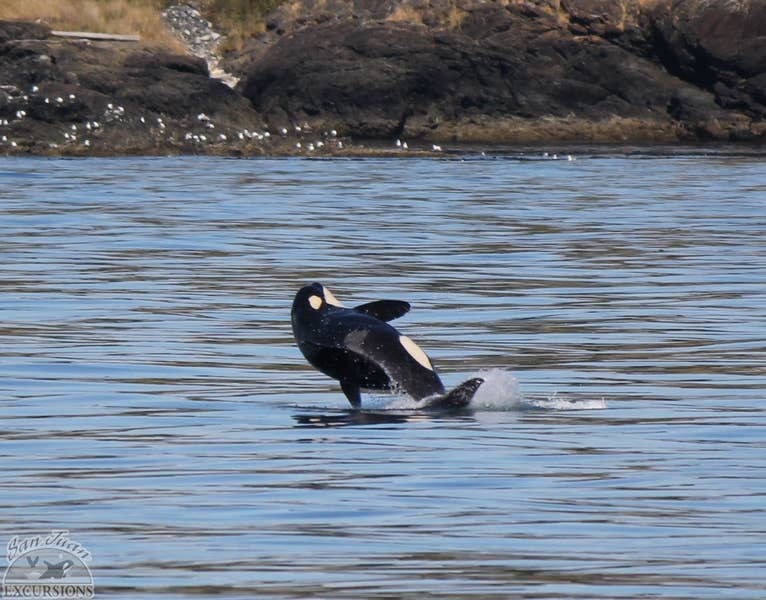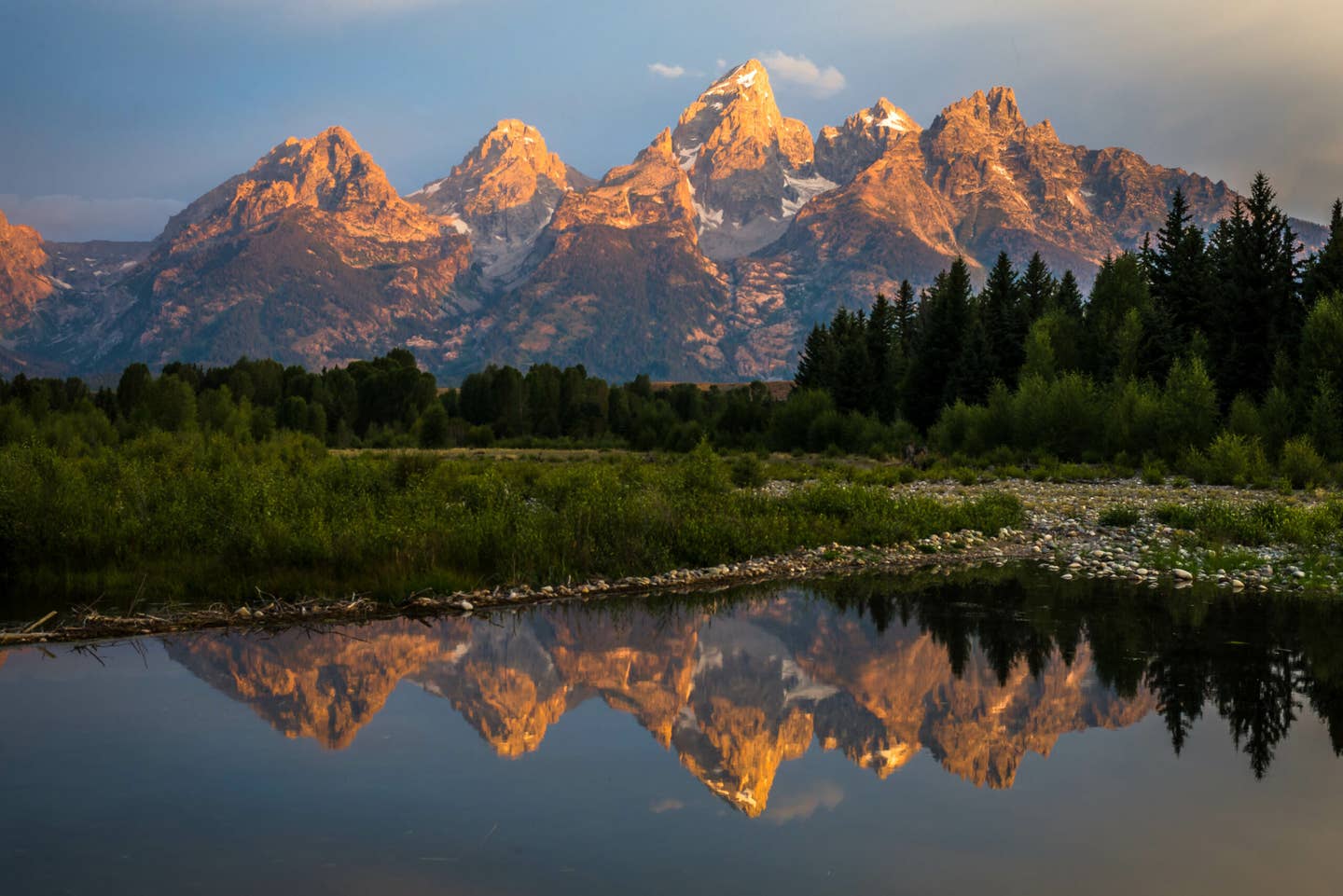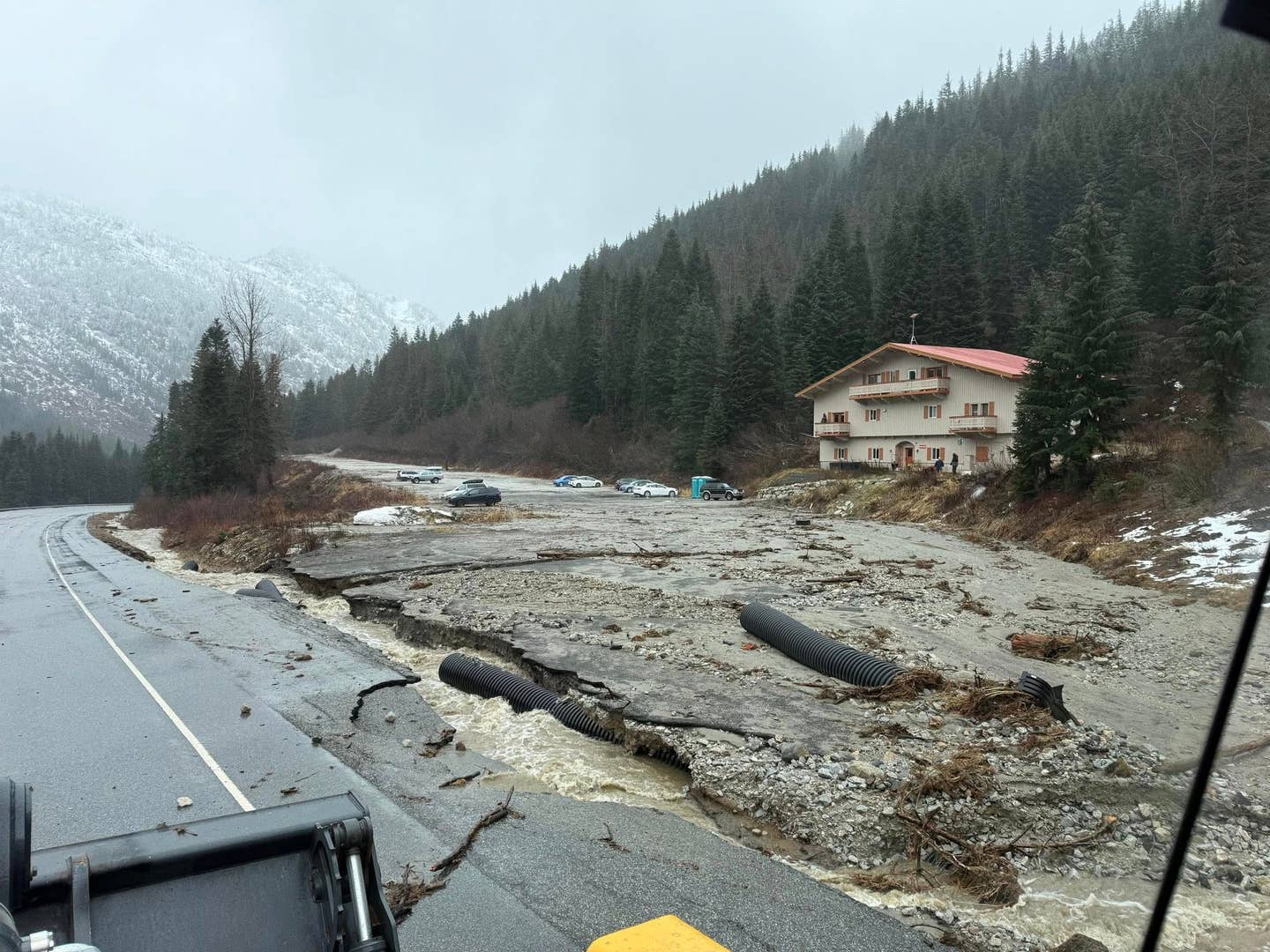

SeaWorld to End Breeding Program, Live Shows for Captive Killer Whales
Popular Stories

A wild killer whale breaches while playing with its sibling near Stuart Island, WA. San Juan Excursions photo.
SeaWorld has chosen to end their captive killer whale (or orca) breeding program, and live orca shows largely due to heightened public criticism about it the ethical ramifications of breeding and caging such large, intelligent mammals, the Humane Society of the United States reported.
Since the documentary Blackfish came out in 2013, there has been a massive amount of support for ending all captive orca breeding programs and stopping live captive orca displays. Since the film's release SeaWorld has seen a fall in attendance at their theme parks and in their stock value, which is down more than half in the last three years, NPR reported.
SeaWorld only conceded to ending its breeding program when the California Coastal Commission set stipulations saying that SeaWorld's plans to expand their current orca habitat could only happen if they agreed to stop breeding orcas (SeaWorld took the CCC to court for that, but eventually was forced to make changes to their current programs).

Sign Up for the TGR Gravity Check Newsletter Now
Members of the Southern Resident Killer Whale population travel north through the San Juan Islands in Washington towards the Canadian Border. These whales often travel over 100 miles a day. Maya Hunger photo.
In an official agreement with the Humane Society of the United States, SeaWorld has agreed to end its captive killer whale program and has called it the end of the "era of captive orca display." SeaWorld makes no mention of any attempts to reintroduce its whales back to their native pods in the wild, but it does say that it will not pursue obtaining new killer whales for any of its existing parks, and no new parks will have killer whale exhibits.
The Humane Society reported that the new CEO of SeaWorld, Joel Manby, believes the American public will come to SeaWorld's parks in larger numbers if he aligns SeaWorld with the values of the Humane Society of the United States rather than resisting it. He also believes that he can use SeaWorld as an agent of change for the good of animals, the Humane Society acknowledged this statement and credits him for this insight.
As someone who knows the Southern Resident Population of killer whales fairly intimately due to my own work on whale watching boats and as a sea kayak guide in the San Juan Islands, WA, it is with great excitement that I bring this news to your attention. This is not the end of the road for ensuring that killer whales are protected from abuse and mistreatment by humans, but it is a large step in that direction.
The Center for Whale Research is a great resource if you're interest in more information about killer whales, such as their lifespan, eating habits, migration patterns, and status as an endangered species.



